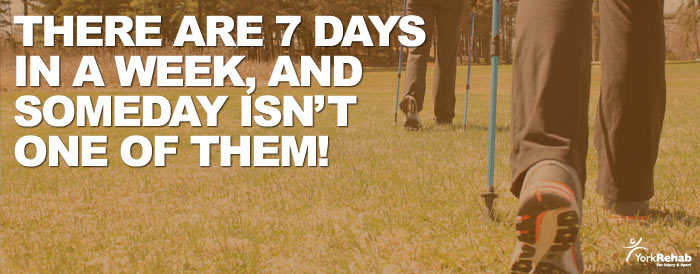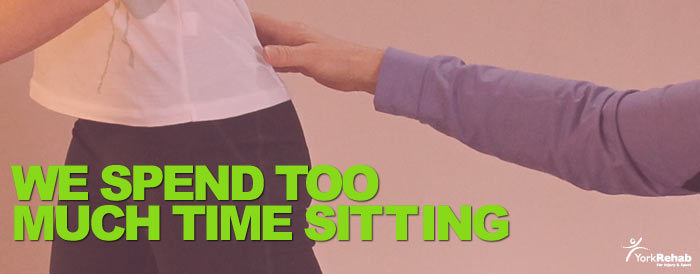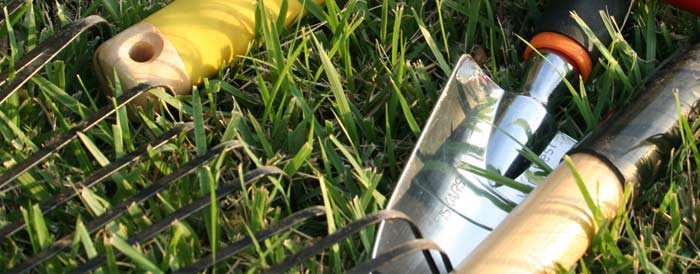Physiotherapy Articles
4 Ways to Make Your Fitness Resolutions Stick
A new year usually brings with it a strong fire to drive change in our lives, especially when it comes to health and fitness. Unfortunately for most, that flame is out before the end of February leaving us with a pile of frustration, disappointment and self-doubt. Here are 4 ways to maintain your “start of the new year fire” to stay on a path to keeping your fitness resolutions.
Partner In Your Commitment
If you have a friend who is interested in making a similar change to their lifestyle, invite them to join you on the transformation journey. When you lose momentum, the support and encouragement from someone else can go a long way. And when you announce your resolution to someone, there’s a factor of accountability that makes is less convenient for you to give in when the going gets tough – and make no mistake there will be times when it gets tough. So find a buddy for support!
DO NOT equate stumbling with failing
Lose the mindset that the moment you miss two days of exercise or eat something you know you shouldn’t or experience a slight injury, it means you’ve failed and it’s okay to give up. Just like a baby learning to walk, recognize that there will be instances where you fall or stumble. It’s part of the process – just get back up and keep trying! Rest assured, persistence is part of your nature – otherwise you’d still be crawling. Remember, it’s a given obstacles will come up – motivational plateaus, self-doubt, scheduling challenges, etc. Whatever the road block, just work around it and keep pushing forward. Small change requires little effort – significant change requires significant effort.
Exercise Isn’t Complicated
Fitness is about activity, not equipment. You can start exercising the moment you make that commitment without the need for special equipment or a gym membership. If you choose activity over sitting on a couch there are an infinite number of ways to break a sweat with just your body:
– Go for a walk or a run…yes, even in the winter.
– Do a low intensity workout combining squats, lunges, push-ups and stretching.
– Step-up to a high intensity workout with a few sets of burpees, supermans, dips, planks and jumping lunges.
Want more ideas? Google “exercise without equipment” – the options are endless.
Pick The Right Friends
If you know someone who lives the kind of healthy lifestyle that you are aspiring to, then find a way to spend more time with them. Also, make a note of the friend(s) you have that live a less than healthy lifestyle and spend less time with them – or more drastically, LOSE THEM AS FRIENDS. You become like the 5 people you spend the most time with – SO CHOOSE CAREFULLY!
Good luck on your journey – success is yours for the taking!
Parkinson’s Disease Can Be Managed
Parkinson’s disease (PD) is a progressive disease of the nervous system marked by tremor, muscular rigidity, and slow, imprecise movement, affecting mostly middle-aged and elderly people. It is associated with degeneration of the basal ganglia of the brain and a deficiency of the neurotransmitter dopamine. PD is known as a chronic, long-term condition that will require ongoing monitoring and management to maintain the patient’s quality of life.
Most common symptoms: tremor, slowness and stiffness, rigidity of the muscles, decreased initiation of movements and impaired balance that can lead to repetitive falls.
Other symptoms: fatigue, soft speech, depression, decreased motivation, constipation and sleep disturbances.
Usually the management of the disease is based on drug treatment and multidisciplinary care for the long term, slow and progressive symptoms.
Once the diagnosis of PD is made, the next step is to decide on a rehabilitation program that will prevent decline of the patient’s mobility, maximizing safety and independence.
A specialized Registered Physiotherapist can develop a treatment program, according to each patient’s needs. The program might include:
- “cued” exercise training
- treadmill training, gait re-education
- balance
- improvement of movement initiation
- improvement of range of motion (BIG movements)
- enhancement of aerobic capacity
- improvement of functional independence, including mobility and activities of daily living
- education on PD self – management
These all result in benefits. However, continued therapy is required to sustain benefits and gains. This is particularly important with Parkinson’s Disease patients since lack of initiation and motivation can be a barrier to rehabilitation.
You can live better and we can help!
Too Much Sitting!
The habit of “how long we sit at our desk” is becoming a trending topic. Studies are linking prolonged periods of sitting to an increase in the risk of hazardous health issues like heart disease, obesity, diabetes, and even cancer. A more disconcerting note is that we may not be able to counter the risks by complimenting the habit with regular exercise.
It may be a little early to tell whether the research provides a valid link. However, regardless of the medical research, paying some attention to the data has merit. It’s obvious we currently exist within a very sedentary culture, and it’s continuing to get worse. The fact that we sit at a desk for 7 or 8 hours a day may not be the root cause but it’s certainly compounding what some might call a sitting epidemic. Let’s remove science from the equation and simply look at some basic facts in today’s culture:
- We work much longer hours, which makes coming home to plop down on the couch so much more enticing.
- As housing prices continue to rise, it pushes us further outside the city (where our jobs usually are) to purchase a home which increases the commute.
- We live in a world of screens (tablet, TV, mobile device, computer) which require us to be still while using them.
- With the advent of video streaming services like Netflix, binge watching is now a hobby.
- Socializing these days is more likely to be done via a “tweet”, “like”, “share”, “pin”, “video”, “pic” or “post” instead of going out to connect with a friend face to face.
- Also, with the average household having more screens than people the likelihood of ending up in front of a screen is high.
Therefore, it is no wonder sitting has become a topic of concern. However, the problem is deeper than the time at your work desk – it’s linked to the culture of today. Like generations before us, a work day usually required people to be stuck at a desk for 7 – 8 hours (a fact likely not to change anytime soon), but that didn’t necessarily translate into the health issues now tied to “sitting at a desk”. It is the other factors in addition to the workday sitting (a necessary evil) that’s creating the problem.
It would make sense to pay some attention to your daily sitting habits (both mandatory and leisurely) and figure out how to reduce any patterns of extended sitting. If you can’t change your work situation maybe you can tweak it as well as revise some of your leisurely habits to reduce the amount of sitting. Some ideas to consider:
- Avoid bringing lunch back to your desk – take a walk (not a drive) and eat somewhere else (even if you end up sitting there).
- Try having a “walking meeting” with colleagues – it’s said that movement which increases blood flow can improve thinking and creativity.
- Explore whether you can leave work early and continue working remotely – yes, you’ll still sit but you’ll break up the prolonged sitting in one spot.
- Get rid of your cable tv package – the more entertainment options you have, the more you watch.
- Take “binge watching” out of your vocabulary – pace yourself and watch those 10 episodes over 10 days instead 10 hours straight.
- If none of your friends are active – it’s time to find some new ones!
- Bring back the “let’s go for a walk” activity.
Make a commitment to turn off, plug out and thumb down when you can and let’s take back our health – and we don’t need any more research to tell us we should! For more ideas on things to do, visit our Activity Guide.
Gardening IS Exercise Too
Gardening is usually looked at as a task instead of actual exercise, and the thought of it being the kind of activity with risk of injury is often the furthest thing from our mind. But GARDENING IS EXERCISE and can pose significant risk of injury due to stress on your shoulders, arms, back, hips and knees. Muscles and joints are also susceptible to due to the repetitive strain and extended periods of fixed positioning (kneeling, bending, etc.).
There are a few things that you can do to protect yourself from injury and as you prepare for your next gardening project:
1. Don’t rush…spread out the work: instead of trying to cram everything into one weekend, take two or three weekends to work on your project. Unlike those “DIY” TV Shows that have teams in the background working to turn around a big project in a couple days…you don’t have that same support so don’t aim for an overnight transformation.
2. Warm up before activity: gentle stretches and movement mimicking the type of activity you’re about to perform is an excellent way of preparing your body for the upcoming work session.
3. Use the right tools: finding tools that are ergonomic can help to relieve some of the stress on joints and muscles. Look for tools that have padded handles and spring-action features (i.e. self opening sheers). Gardening gloves with a rubber grip are also recommended. Such gloves produce a better grip, allowing less effort when holding tools which reduces muscle strain.
4. Remember technique: don’t discount the benefits proper of technique…it can make a job much easier. When lifting heaving objects (flower pot, bags of soil, decorative stones, etc.), remember to lift with your legs (not your back). And when doing repetitive work like raking, remember to keep feet shoulder width apart, use your shoulders as much as possible(and minimize bending your back), switch leg and arm positions regularly and avoid twisting your body (reposition your feet in the direction you’re extending).
The whole idea behind a beautiful garden is that you get to spend time it – the last thing you want is to be stuck inside recovering from a preventable injury. So remember these points to keep away from injury. Happy gardening!






